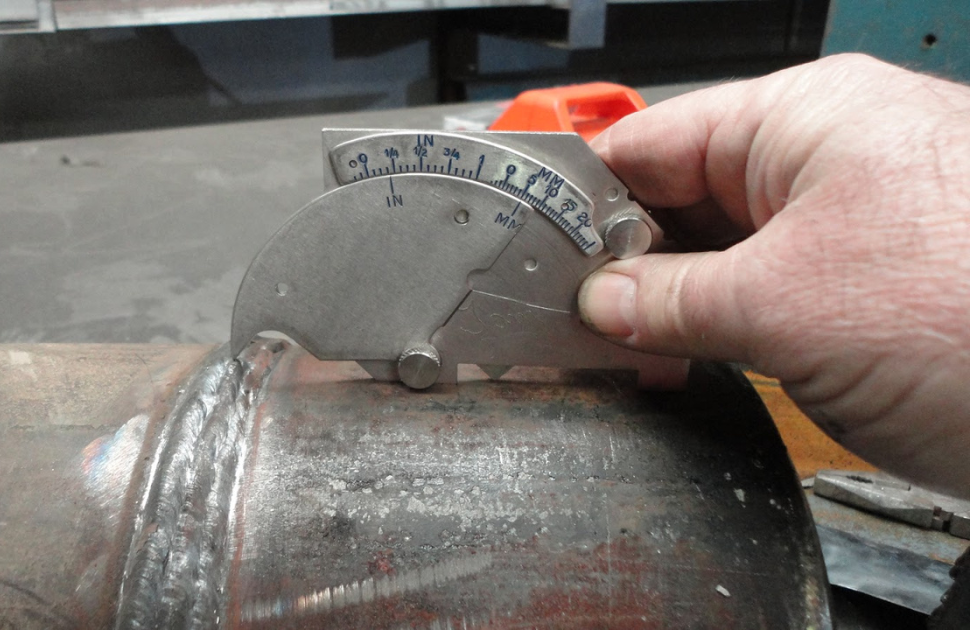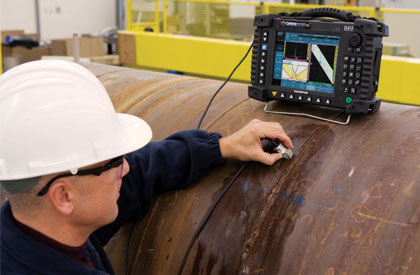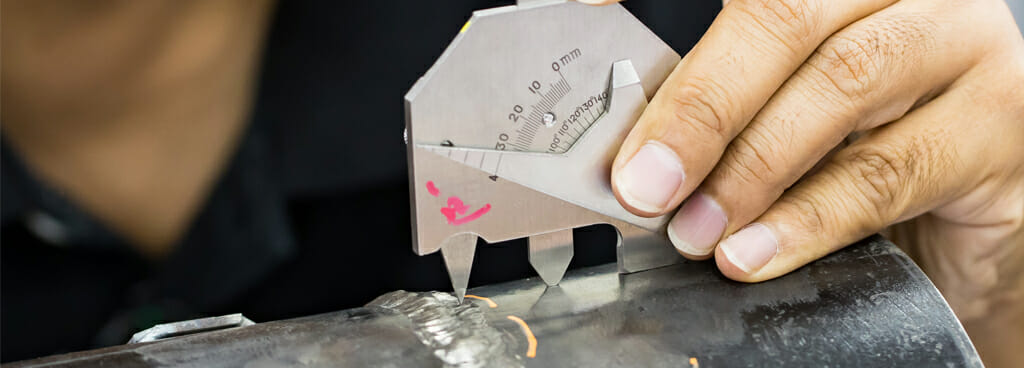A Comprehensive Overview to Recognizing Exactly How Welding Examination Functions: Techniques, Specifications, and Best Practices for Quality Control in Metal Construction
Recognizing the complexities of welding assessment is essential for preserving the honesty of steel fabrication. Different strategies, such as visual and ultrasonic testing, play a pivotal function in recognizing possible flaws, while adherence to established requirements makes sure conformity and durability. Additionally, carrying out finest methods can dramatically boost quality control steps. The landscape of welding assessment is not without its difficulties. What issues develop in the field, and exactly how can these be effectively reduced? Checking out these aspects reveals the deepness of this crucial technique.
Importance of Welding Examination
Although welding is an essential process in various industries, its honesty directly impacts the security and performance of parts and structures. Reliable welding examination is crucial for determining issues that might jeopardize the top quality and toughness of welded joints. This procedure makes certain adherence to developed requirements and requirements, which are essential for maintaining architectural honesty and operational reliability.
Welding assessment offers multiple functions, consisting of verifying that the welding process has actually been executed appropriately, examining the top quality of products used, and verifying that the ended up item meets regulative and market requirements (Houston Welding Inspection). Via rigorous evaluation, prospective problems such as porosity, splits, and insufficient fusion can be spotted early, mitigating and avoiding costly repair work security dangers
Additionally, consistent welding evaluations foster confidence among stakeholders, including engineers, clients, and regulatory bodies, by showing a dedication to top quality assurance. The significance of welding evaluation can not be overstated; it is integral not only for conformity with lawful demands however also for boosting the total performance of welded structures. Inevitably, a durable welding assessment program is a positive step that safeguards against failings, making certain the durability and dependability of welded components in their desired applications.
Common Welding Examination Methods

Aesthetic examination is the first line of defense, allowing examiners to recognize surface area defects such as cracks, damages, or insufficient blend. Radiographic screening makes use of X-rays or gamma rays to disclose inner flaws, making it excellent for complex welds. Ultrasonic screening uses high-frequency audio waves to identify subsurface issues, giving specific dimensions of weld stability.
Magnetic bit screening works for ferromagnetic products, highlighting surface area and near-surface interruptions when particles are put on a magnetic field. Alternatively, dye penetrant testing uses a fluid color to expose surface-breaking defects, ensuring that also the tiniest defects are identified.
Each method has its restrictions and strengths, often demanding a mix of techniques for comprehensive assessment - Houston Welding Inspection. By using these assessment techniques, top quality assurance in metal manufacture is achieved, making certain that bonded structures fulfill security and efficiency requirements
Industry Specifications for Welding


The American Welding Society (AWS) and the American National Specification Institute (ANSI) are 2 famous companies that establish welding standards. AWS D1.1, for example, outlines the requirements for welding steel frameworks, while AWS D1.2 concentrates on light weight aluminum. Internationally, the ISO 3834 basic addresses quality requirements for blend welding, supplying a view it framework appropriate across nationwide boundaries.

Best Practices for Quality Control
Quality guarantee in welding is critical to achieving durable and secure constructions. Developing a detailed quality monitoring system (QMS) tailored to the details welding task is necessary.
Routine training and accreditation of welding workers are vital for keeping a competent workforce. Constant education on the current welding techniques and innovations ensures that assessors and welders are well-informed concerning current criteria and practices.
In addition, conducting pre-weld assessments to evaluate products and tools can stop defects before they take place. Houston Welding Inspection. During the welding process, real-time surveillance and documentation of welding specifications aid identify disparities quickly. Post-weld inspections must entail extensive exams making use of non-destructive testing (NDT) techniques to make sure the honesty of the welds
Furthermore, preserving clear communication amongst employee advertises a culture of quality. Regular audits and reviews of the welding process assistance determine locations for renovation. By sticking to these ideal practices, companies can accomplish ideal quality control, inevitably bring about boosted safety and efficiency in steel manufacture tasks.
Obstacles in Welding Assessment
Although welding examination is critical for ensuring architectural honesty, it offers a range of difficulties that can complicate the assessment procedure. One substantial obstacle is the variability in welding strategies and products utilized, which can impact the consistency of weld top quality. Various welders may employ differing techniques, resulting in discrepancies that inspectors need to recognize and examine.
One more obstacle involves the discovery of problems. Non-destructive testing (NDT) approaches, such as ultrasonic and radiographic testing, can be complicated and require proficient professionals to translate outcomes precisely. Incorrect positives or negatives can occur, possibly resulting in expensive rework or compromised safety and security.
Additionally, the visibility of ecological aspects, such as temperature and moisture, can affect the stability of welds and the performance of assessment strategies. Examiners have to also browse the regulatory landscape, making sure conformity with market criteria, which can vary by jurisdiction why not check here and application.
Verdict
In conclusion, welding assessment plays a vital function in making sure the integrity and security of steel manufacture. Employing a variety of examination strategies, adhering to well established sector standards, and carrying out effective high quality management practices jointly boost the integrity of welded structures. In spite of the difficulties encountered in the evaluation procedure, a dedication to continuous improvement and adherence to best methods can substantially boost the top quality guarantee structure, cultivating better self-confidence amongst stakeholders in the welding sector.
Effective welding inspection is important for identifying problems that could compromise the quality and resilience of welded joints.Moreover, regular welding examinations foster self-confidence amongst stakeholders, consisting of engineers, clients, and governing bodies, by showing a commitment to quality assurance.The American Welding Culture (AWS) a knockout post and the American National Specification Institute (ANSI) are two popular organizations that develop welding requirements. During the welding process, real-time surveillance and paperwork of welding parameters help recognize variances instantly. Despite the obstacles dealt with in the inspection procedure, a commitment to continual enhancement and adherence to finest practices can dramatically boost the quality guarantee framework, cultivating greater self-confidence among stakeholders in the welding sector.